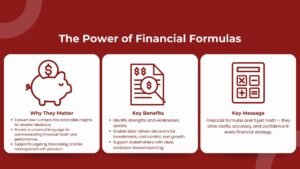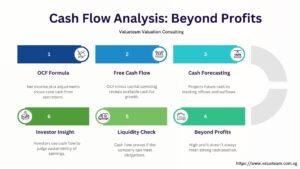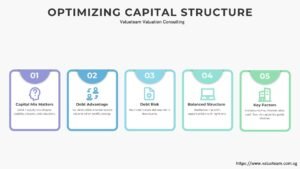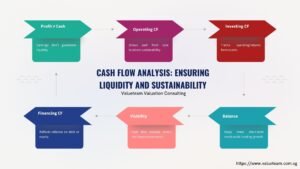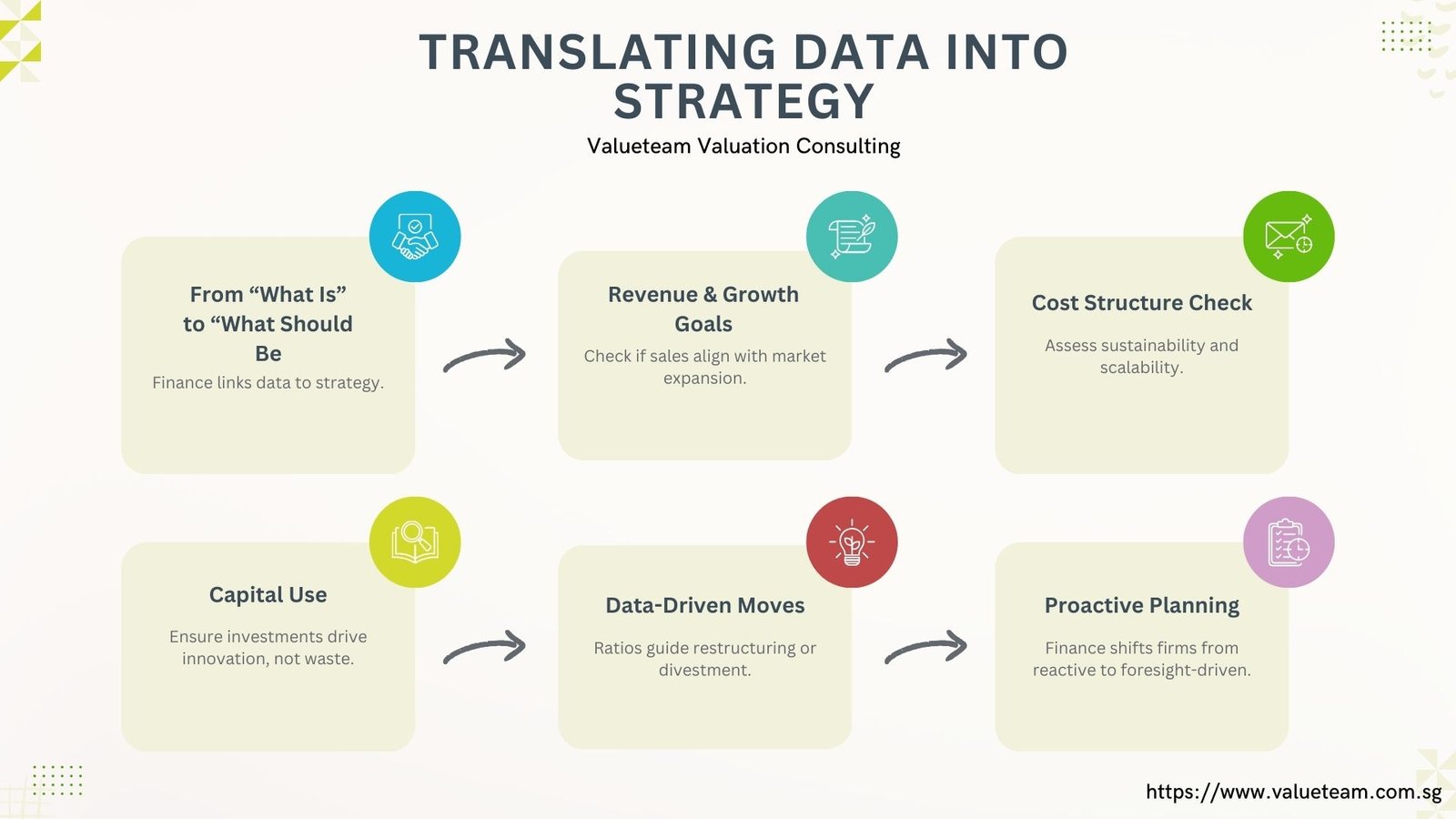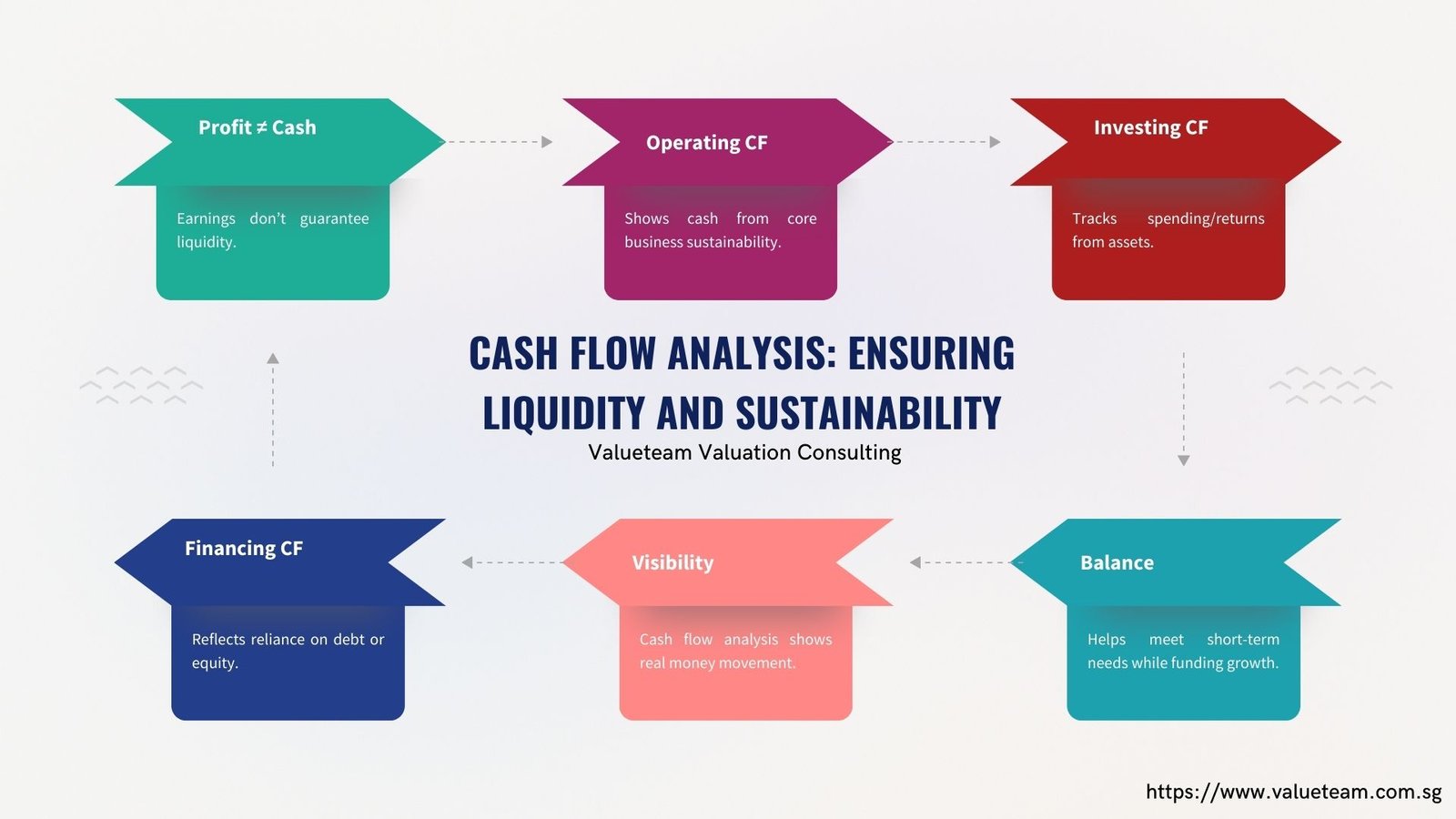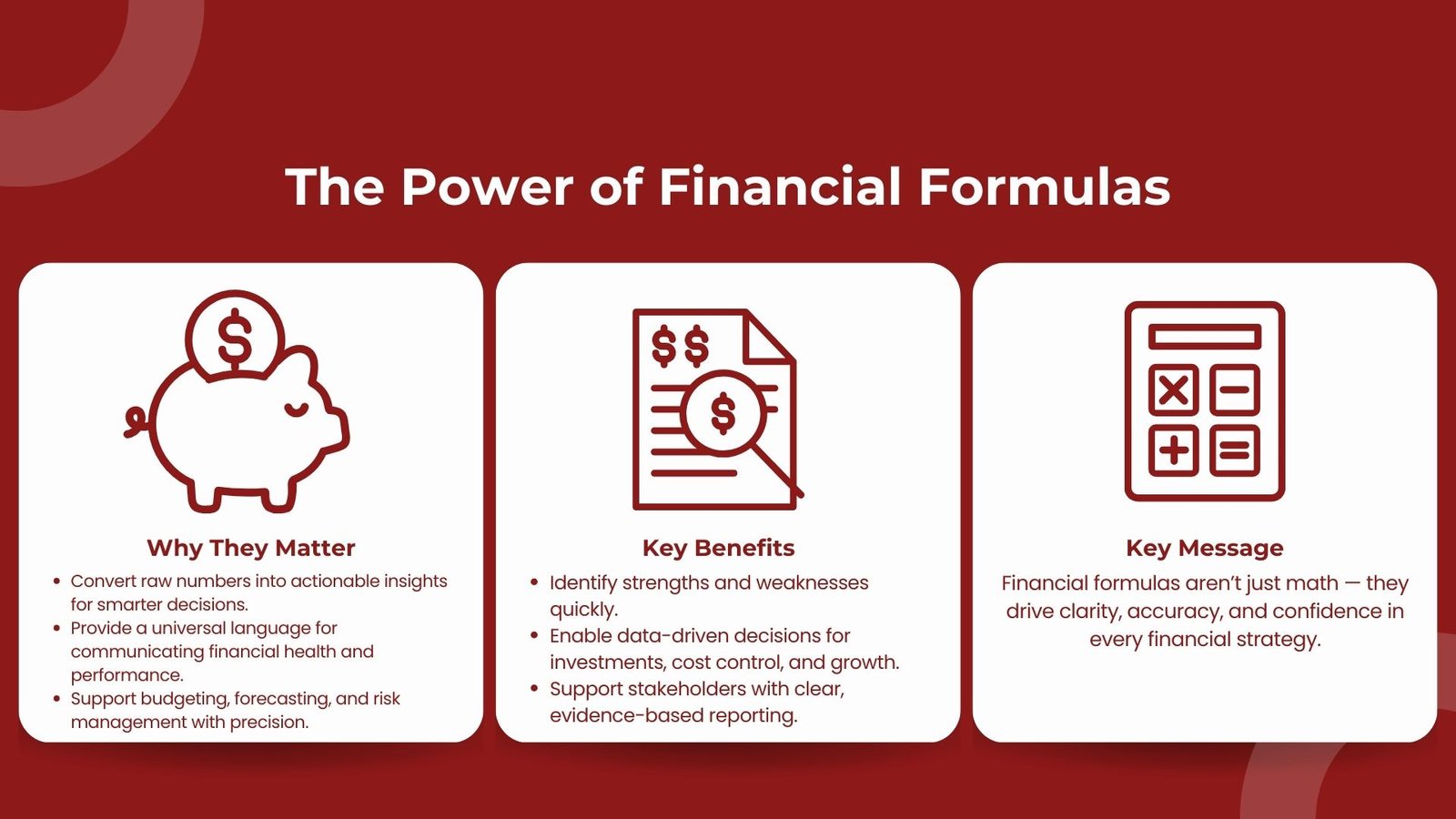
Essential Finance Formulas for Analysts A Complete Guide
Essential Finance Formulas for Analysts A Complete Guide
Understanding Key Finance Formulas for Analysts
Formulas in the field of finance do not simply add up to figures on a sheet. They are the systematic language that is followed by the analysts in order to assess performance, measure profitability, risk, and provide good recommendations. As a professional involved in corporate finance, investment banking, equity research or even internal business analysis, mastery of key financial formulas is the skill that one cannot do without. They present the interface between raw financial data and valuable insights and enable the analysts to transform the reports of a company into effective strategies.
The traditional financial formulas have become obsolete in the way the analysts approach them, but at the same time, they have not lost their relevance. The financial analyst who is knowledgeable in these formulas is able to see past the shallow numbers and see the underneath currents, inefficiencies and prospects. These formulas provide a basis on accuracy and credibility in either valuing a company, determining efficiency of a firm or making an investment decision. In fact, when paired with the best tools used in financial analysis, their effectiveness increases significantly in delivering deeper insights.
This paper discusses the key formulas that an analyst must be familiar with, the reasons why they are important and the manner in which they are used in various occasions. Towards the close you will find out these formulas are not only technical instruments, in this day and age of financial scurrying, they are strategic decision-making instruments.
The Foundation: Understanding the Purpose of Financial Formulas
It is necessary to realize what steps are provided by financial formulas before proceeding with details. By their very nature, such formulas reduce complex statements of financial accounts to manageable and comparative measures. The income statement, balance sheet and cash flow statement of a company has plenty of data yet without any interpretation those numbers will not amount to much.
Financial formulas enable analysts to standardize such data, such that it is indeed measurable to a degree that one can compare performance over time or industries and/or competitors. To illustrate, profitability ratios are calculated using formulas that tell how well a company now transforms revenue into profit and liquidity ratios determine whether business can pay the short term liabilities.
It is also significant to agree that the formulas of finance are not academic. They are instantly and directly applicable in the real world. Valuation formulas may be used by an equity analyst to set a target price on the stock. Even a credit risk analyst can use debt coverage ratios to evaluate the capacity of a borrower to repay loans. In even budgetary company procedures, having insight of cost behavior formulae can guide managers in budgetary decisions on pricing and controls.
In that regard, formulas are not numbers only but systems of decision support that help to gain perspective in tricky decisions. Financial analysis would run aground without them being more than rumor-mongering.
Profitability and Return Metrics: Measuring Business Performance
Among the earliest sets of the formula that analysts are exposed to is profitability and return metrics. They are critical in the evaluation of the effectiveness with which a company is making profits as compared to sales, assets or equity. They do not merely show total profit and demonstrate efficiency of transforming resources into value.
For example, net profit margin is the percentage of revenue of the total amount of expenses deducted. It informs analysts about how successful a company is in controlling its production, as well as expenditures. Return on assets (ROA) is a metric that notes the efficacy of the total asset base of the company to generate profit whereas return on equity (ROE) is used to determine returns attained on behalf of stockholders.
These formulas are of particular value in the investment world. Considering several companies in one and the same industry, an investor could take ROE as a determinant factor to invest in a particular company with higher returns based on the same equity base. In firms that are contemplating expansion, these measures can help them know whether the growth will make a difference or merely enhance the costs without adding to the profitability.
These basic formulas are needed to be revisited by even experienced analysts as it is the foundation of deeper analyses. Profit margin can also look good until you adjust it against trends across the industry or see that it has been achieved at the expense of low reinvestment in the future. That is why analysts do not often use just one formula in isolation profitability ratios are more competent when evaluated with efficiency, leverage and valuation ratios.
Liquidity and Solvency: Assessing Financial Stability
Profitability is not the only factor that can be used to decide the financial health of a company. The determinations of the liquidity and solvency are made with the help of particular formulas to indicate whether the business will be able to fulfil the short-term and long-term liabilities. Such measures play the key role in risk management, credit analysis and decision making processes.
An example is the current ratio, which will compare current assets and current liabilities and can tell an individual whether a company can settle short-term debts by using readily available resources. The ratio that is lower than one can be an indication of liquidity problems and a ratio that is too high may be a situation that depicts idle resources. The quick ratio is a further subdivision of this analysis which does not count on inventory as a current asset since it wants to count on the most liquid assets as such.
In the long-term, ratios of solvency e.g. debt to equity ratio determine the reliance of a company on outside funds e.g. shareholder equity. This equation assists analysts in comprehending the risk associated with leverage and the firm financial capability of the company to make further financing without endangering the survival. The other key ratio is interest coverage ratio where it indicates how easily a firm may meet its interest charges using operating revenue.
As an analyst, one will gain a risk-adjusted perspective on the position of a company using these formulas. A company might seem profitable on books but might be a liquidity shortage away as it has to default when it is not able to meet its short-term liabilities. The use of liquidity, and solvency formulae can be used in substantiating the assessment thus providing a fuller financial picture vital to lenders, investors as well as corporate boards. This approach is also emphasized in the Financial performance analysis course Singapore, helping professionals strengthen their decision-making skills.
Efficiency and Asset Utilization: Maximizing Operational Value
The other critical set of formulas works around efficiency and asset utilization. These provisions indicate the quality of resource exploitation of the company to earn revenue and manage expenses. To the analysts, such formulas create a feed to the financial performance of operating performance.
An example is inventory turnover which gauges the number of times that the company is selling and replacing its stock in the period. High turnover can lead to great sales and good inventory management and a low turnover could mean excess or dropping desire. Asset turnover, however, computes the effectiveness of the company using its total amount of assets to produce sales revenue.
These formulas are of specific importance to industries that have high capital investments like manufacturing, retail and transportation. The assets turnover ratio can be used to see whether or not a company is utilizing its resources to their best or not because it could partially affect profitability and survival.
Efficiency ratio is also useful in internal decision-making. E.g. a retailer could use them in determining whether to open new stores, and a manufacturer in determining where production bottlenecks are. To analysts, the bundling of such operational measures with profitability and liquidity figures give the balanced picture of performance since the good strong revenues reveal that the good operational practice is based.

Valuation Metrics: Determining Worth and Investment Potential
Mergers, acquisition, or equity research analysts engaged in making investment decisions base their livelihood on valuation formulas. Such formulas offer systematic means of determining the value of a business, allowing the stakeholders to make offers, value shares or calculate strategic blockbuster potentials.
The price-to-earnings (P/E) ratio, which is used as a comparative measurement against share price and earnings per share of a company, is regarded as one of the most popular valuation measures. This formula provides the information on the market expectations and may provide information of the undervalued stock of a stock versus a peer. A third valuable formula is enterprise value (EV) that combines market capitalization, debt and cash to provide a more thorough indication of the entire value of a company.
The more advanced Discounted cash flow (DCF) analysis is formula-based, too. Analysts can estimate businesses intrinsic value by quantifying a discounted cash flow into the present value and then counting the outputs. The approach is especially useful to firms with stable, predictable cash flows and this should act as an effective cross check to market-based valuations.
Valuation formulas do not just apply in questions related to external investment, but even in corporate planning within the firm. They may instruct strategic issues like divestitures, money raising and development tasks. When these formulas are used in a concrete way, analysts can offer valuable insights on their own that extend well beyond simple financial numbers.
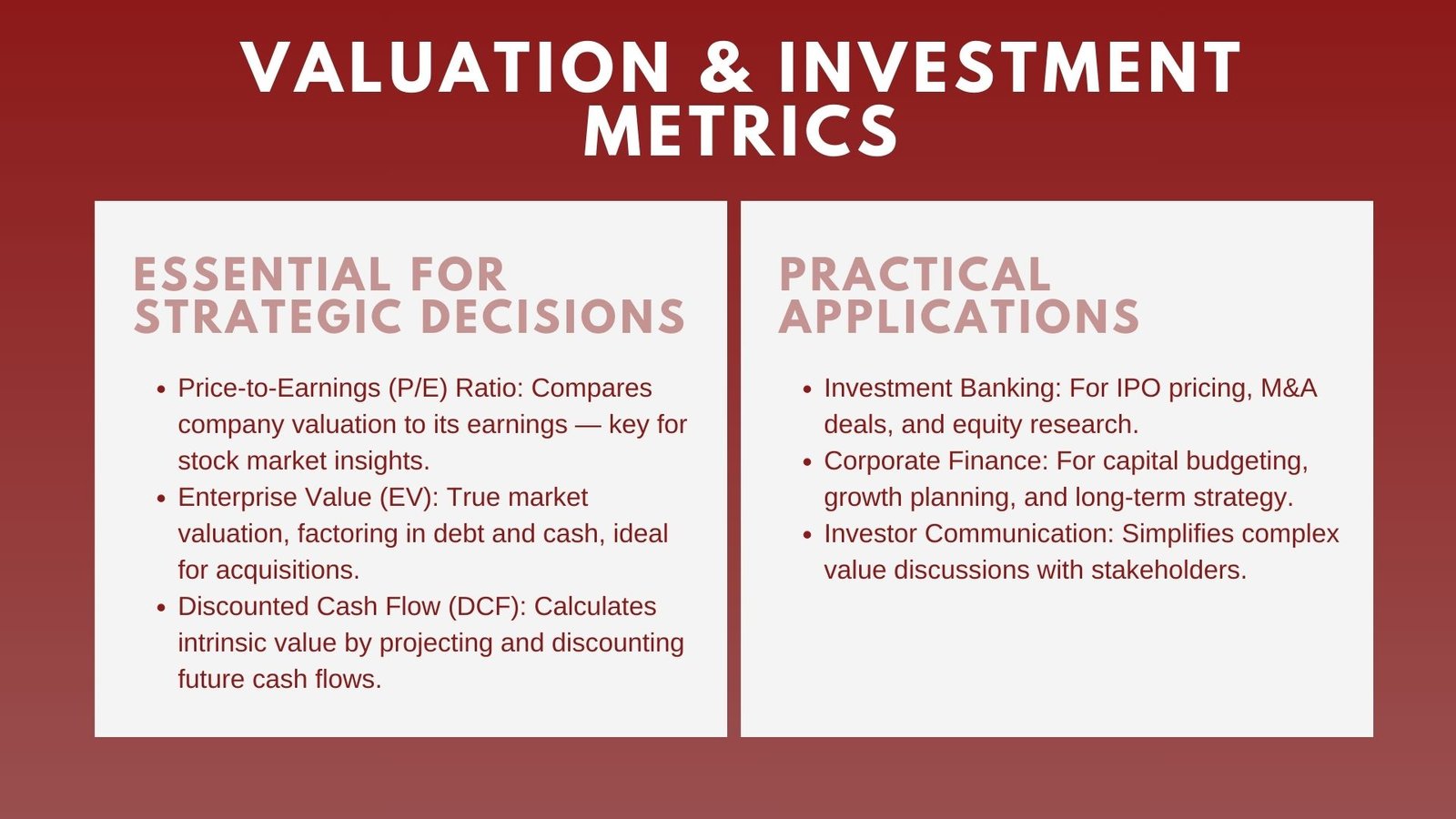
Building Confidence Through Mastery of Financial Formulas
Finally, learning the financial formulas is not about learning the equations but learning what the equation is saying. When accompanied by mature judgment and reality, analysts who can utilize such formulas are highly valuable in terms of their contribution in any organization, be it in the field of investment banking, corporate finance, and risk management.
Informed decision-making has the framework of financial formulae. They enable analysts to assess performance in a number of dimensions, strike a balance between short and long term, and recognize opportunities as well as risks. Formulas when set well can do much more than tick boxes, they offer an application in terms of language or rather a language applied to finances in order to know how to put things into practice.
In the current competitive world of business wherein making decisions and defending them using sound evidence is how to survive, the skill of properly applying these formulas can make a difference to an analyst. As a professional, regardless of level of career advancement, committing time to learning and mastering the key finance formulas is not about a technical competence but rather, a promise of bringing clarity, precision and value in every analysis one undertakes.








